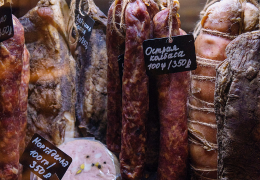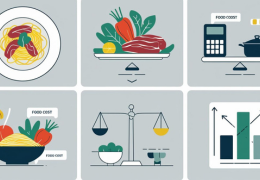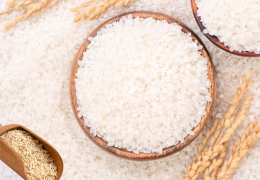Rice: A Journey Through Types and Uses
Rice is one of the oldest and most versatile foods ever cultivated by humans, and it forms the foundation of the diet for millions of people around the world. Despite its simplicity, rice comes in various types and varieties, each with specific uses and characteristics. In this article, we will explore the most common types of rice, their culinary applications, and the peculiarities that make this food so rich and fascinating, with a special focus on Italian cuisine.
Types of Rice
There are numerous types of rice, each with its own taste, texture, and culinary use. The main varieties are primarily divided into two large categories: long-grain rice and short-grain rice. Within these categories, there are dozens of varieties. Here are some of the main ones:
1. Long-Grain Rice
Long-grain rice is characterized by long and thin grains that, once cooked, remain separate and light. It is ideal for dishes where the rice needs to remain fluffy, such as salads, cold dishes, or side dishes.
-
Basmati: Basmati rice, originating from India and Pakistan, is one of the most well-known long-grain rices in the world. It has a delicate fragrance and a slightly nutty flavor. It’s perfect for Indian and Pakistani dishes, such as biryani or pilaf.
-
Jasmine: Also known as Thai fragrant rice, Jasmine rice is aromatic and has a characteristic floral scent. It is widely used in Asian cuisine, especially in Thai and Vietnamese dishes.
-
Vialone Nano: Originating from Veneto, this long-grain rice, though less known internationally than Basmati, is highly appreciated in Italy, especially for preparing risottos and dishes cooked in broth.
2. Short-Grain Rice
Short-grain rice has a more compact texture and tends to release more starch during cooking, resulting in a creamier, stickier consistency. This type of rice is ideal for making risottos, sushi, and desserts.
-
Arborio: Arborio rice is the most famous rice in Italy for making risotto. Its round, large grains release starch when cooked, creating the creamy texture that makes risotto so special.
-
Carnaroli: Often called the “king of rices,” Carnaroli is considered the best for risottos due to its ability to absorb liquids without overcooking. It is very resistant to cooking and allows for perfect risotto texture.
-
Vialone Nano: As mentioned, Vialone Nano is a short-grain rice known for its creaminess and is an essential ingredient for traditional Venetian risottos, such as radicchio risotto.
-
Sushi Rice: This short-grain rice is very sticky and helps hold the sushi together. It is cooked in a liquid with vinegar, sugar, and salt to give it its characteristic flavor.
3. Brown Rice
Brown rice is simply unrefined rice that retains the bran and germ. It has a more intense flavor and a fibrous texture compared to white rice and requires a longer cooking time. It is rich in fiber, B vitamins, and minerals, making it an excellent choice for those seeking a healthier diet.
4. Black Rice
Black rice is a variety of brown rice that has a dark color and a delicate, slightly sweet aroma. Often associated with Asian cuisine, it is also known for its antioxidant properties, thanks to the presence of anthocyanins, which give it its color. It is used in special dishes, such as salads or desserts.
Rice in Italian Cuisine
In Italy, rice is a fundamental ingredient in many regions, and its cuisine reflects a tradition that spans from risottos to baked dishes, with iconic dishes such as Sicilian arancini and rice salad. Each region has its specialty, but the common element is always the quality of the rice and the skill in cooking it.
Italian Risottos
Risotto is one of the signature dishes of Italian cuisine. It is made by cooking rice in broth, which gradually absorbs the liquid, creating a creamy texture. The most common rice varieties for risotto in Italy are Arborio, Carnaroli, and Vialone Nano, each with unique characteristics that make them ideal for different types of risotto.
Some traditional Italian risottos include:
-
Risotto alla Milanese: A saffron-infused risotto typical of Lombardy.
-
Risotto ai Funghi Porcini: A classic autumn dish made with fresh, fragrant mushrooms.
-
Risotto al Nero di Seppia: A risotto made with cuttlefish ink, typical of coastal Italian regions.
Sicilian Arancini
An iconic dish of Sicilian cuisine is arancini (or arancine, depending on the region). These delicious snacks are made with rice that is cooked, cooled, and shaped into balls or cones, filled with ragù, mozzarella, or other fillings, and then fried to a golden crust. The ideal rice for preparing arancini is Arborio or Carnaroli, as their ability to retain starch helps achieve a firm yet soft consistency inside, perfect for frying without falling apart.
Rice Salad
Rice salad is a popular summer dish in Italy. It is prepared with boiled rice and seasoned with a variety of fresh ingredients, such as vegetables, legumes, tuna, boiled eggs, and other optional ingredients. It is a dish that lends itself to infinite regional variations depending on local tastes and traditions.
Rice Desserts
In Italy, rice is also used in desserts. A well-known example is risolatte, a creamy and delicate dessert made with rice, milk, sugar, and flavorings like cinnamon or vanilla. It is a dessert prepared in many variations throughout Italy.
Rice Cooking Machines in the Food Industry
In the foodservice industry, cooking rice is a critical process, especially when large quantities need to be prepared. To ensure perfect and uniform results, rice cookers are essential tools for quickly and efficiently cooking rice. These machines allow for rice to be cooked without the risk of sticking or burning, keeping its ideal texture intact.
There are several types of professional rice cookers available, varying in capacity and functionality, such as automatic cooking models that regulate time and temperature for perfectly cooked rice every time. If you are looking for a professional rice cooker for your business, you can find more information on this site.
Conclusions
Rice is an incredibly versatile food, suitable for a variety of uses and variations. From a simple side dish to a main course, as the base for risottos or an ingredient in desserts, rice is a staple in many culinary traditions. In Italy, rice is a vital part of our gastronomy, and thanks to its variety and adaptability to different dishes, it continues to be a symbol of Mediterranean cuisine. With its numerous varieties and ability to fit into many preparations, rice remains a pillar of Italian cooking that continues to surprise and satisfy even the most demanding palates.












